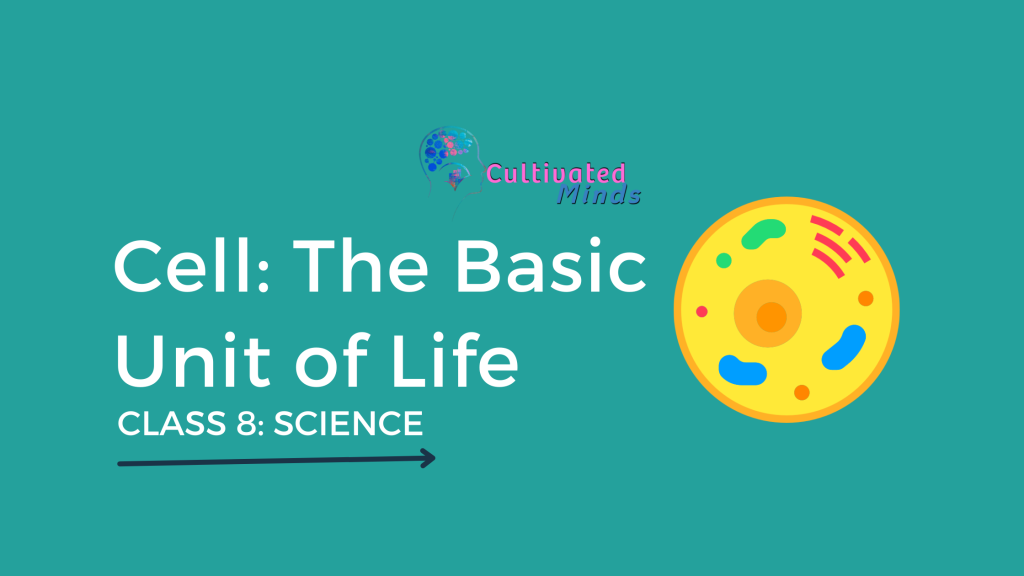Q 1. Define Cell.
Answer: A cell is a basic functional and fundamental unit of life and also called as building block of the body.
Q 2. Who discovered the cell.
Answer: The cell was discovered by an English scientist Robert hooke in 1665. He discovered it by observing the thin slices of cork under his crude microscope.(simple Microscope).
Q 3.Give three examples of unicellular organisms.
Answer: The three examples of unicellular organisms are amoeba (protozoa), paramecium (protozoa) and chlamydomonas (green Algea).
Q 4.Answer the following questions:
1.Why cell could not be observed before the 17th century.
Ans: Most cells are smaller in size due to this smaller size these cells could not be seen before 17th century because no instrument was invented that could be used to see these small structures.
2.Why cork could not be observed as such by hook
Plant Cork is a solid structure so Hook was unable to observe it under his crude microscope.
3. Where did hook demonstrate his observations on cork slice
Ans: Hook demonstrated his observations on cork slices to the scientist at the royal society of London
4.Name the outermost layer of animal cell
Ans: The cell membrane is the outermost layer of an animal cell
6. Where are chromosomes present in a cell
Chromosomes are present in the nucleus of the cell.
7.Name the cell part which has tiny holes
Cell membrane or plasma membrane and nuclear membrane have tiny holes
8.Name the cell organelle which are found in a plant cell
Mitochondria chloroplast nucleus endoplasmic reticulum Golgi complex ribosomes lysosomes etc
9.Name the cell having branched structures
A nerve cell is a cell that has branched structures.
10. Which cell can be observed under an unaided eye
The cells that are bigger in size can be observed with an unaided eye example ostrich egg
Q5. Mention the functions of the following
Cell membrane:
Functions of cell membrane
It protects the cell
It provides shape to the cell
it is a very thin s covering of the cell.
Chromosomes
Functions of chromosomes
Chromosomes are thread like structures
they inherit the characters from one generation to another
Protect the genetic material DNA from being damaged during cell division
Q6. Why are the following important to a plant cell.
Cell wall: The cell wall is important to the plant cell because it provides rigidity to it and also provides protection to the cell.
Chloroplast: It is important to the plant cell because it helped the plant to make food it has a green pigment called chlorophyll.
Mitochondria: It is important to the cell because it provides energy to the cell and performs the functions of respiration.
Nucleus: It controls all the life functions taking place in the cell it is also called as the boss of the cell nucleus is important to the cell because it is responsible for the transmission of characters from one generation to another.
Q7. Draw an outline diagram of an animal cell label its different parts.
Diagram. Diagram
Q8. Mention three differences between plant cell and animal cell
Plant cell
It has a rigid cell wall
The chloroplast is present
The vacuole is present in large size
Animal cell
The cell wall is absent
The chloroplast is absent
The vacoule is if present it is smaller in size
Q9. What features are proposed by both plant cells and animal cells
Future is proposed by both plant cells and animal cells are
1. The plasma membrane is present in both
2.The nucleus is present in both
3Both cells contain mitochondria
Both cells contain organelle is like endoplasmic reticulum ,Golgi complex ,lysosomes and ribosomes
Q10. Why are narrow cell long why do these cells have projections
Answer: Nerve cells are long branched and have thread like projections because their function is to convey message to all parts of the body
Q 11. Why are mitochondria are known as the powerhouse of the cell.
Answer: Mitochondria are called the powe house of the cell because they provide energy to the cell and also helps in respiration
Q12. Which four basic elements constitute more than 90% of protoplasm
Q13. Write in brief about the variation in the shape and size of cell.
Answer: Varation in shape and size of the cells depend upon the function performed by them.in unicellular organisms all the functions of the body is carried out by a single cell.In multicellular organisms work is divided to many cells.
Q14. Name the different cell organelles and the functions of these organelles ( same as questions no 7)

